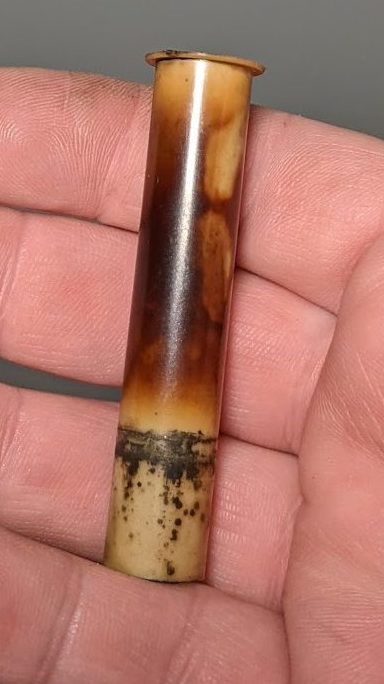Chris refers to the Gottlieb drops as the Cadillac of drop targets. I’m not so sure, but they do play well. Drop targets are an annoying mechanism to work on, especially those with added features like trip coils.
Williams drop targets have a failure mode I call slo-mo drop targets. You smack one with the ball, and instead of clicking down, it sinks slowly into the playfield. This comes from dirt. If they’re really dirty, you can hit one, the ball can move far away, and then it sinks. It’d be cool if it happened on purpose.
I got this Gottlieb Counterforce. And it had slo-mo drops. I’ve never seen this in a Gottlieb game. There’s nowhere for the dirt to hide. So, while shopping out a bunch of stuff wrong with this game, I did the drops.
I replaced all the targets (which didn’t match). I followed PAPinball’s guide, which is very good. I didn’t expect this to fix anything, but I hoped it would. It didn’t.

I cleaned the coil sleeves for the two reset coils, which didn’t really help. So I removed the bank and did a deeper (but still half-assed) cleaning. When I was done, I still had slo-mo targets. (This sleeve is cooked, but it still works OK. Perhaps I’ll replace the coil, but for now, it’s working fine.)
It became pretty clear the problem was with the reset bar not sinking. If one target was already fully down, any other target would drop quickly. But if no targets were all the way down, you’d get slow action because the drop target had to push the reset bar down. So once the reset bar was down, targets would drop quickly.
On this mechanism, there is some freedom to adjust the coil in the bracket. Coils can be twisted slightly relative to their plunger and the reset arm. The coil needs to be square to the bracket, and both coils need to be at about the same depth. The coils can be adjusted slightly so the reset bar doesn’t over-extend the targets out of the top of the playfield, but they need to be square to the mechanism to work correctly.
Now, as drop target banks go, this one has all the bells and whistles. There are seven drops, but there are seven trip coils on the top, too. These are triggered by the computer when it wants to drop a target. In Counterforce, these are triggered by rollover switches and standup targets scattered all over the playfield. Each drop target has a sense switch, but it also has a lamp voltage switch used for “when lit” indicators for the trip switches, and also for the big falling-bomb gimmick.
On my game, one of the trip switches didn’t trip. This appears to have been a coil that was open. The coil was A-18642, but research indicates there are a couple other usable substitutes, one of which was in Chris’ parts bin. So that’s what got used. (Pinball Resource can identify the substitutes, if necessary, but they also have the correct part number.)
I was able to identify that this coil was open by using a multimeter. In the diode setting, I was able to measure the diode of the bad coil — but not of the good coils. For the good coils, when I try to measure the diode, I measure the coil instead. So that was my indication that the coil was at fault.
So far, so good. Resoldering these coils is kind of a pain because there’s so little clearance in this mechanism.
My Counterforce is still torn apart waiting for other parts, but the drops all now work correctly.
So:
- Make sure the reset arm drops completely, and freely. If not, look for a twist in the position of the reset coils.
- The reset coils should be positioned so that the coil stop stops the plunger before the drop target goes up too far and shears off the foot.
- Find the criteria for remote-trip coils and verify they’re all working.
This all applies mostly for Gottlieb drop targets. In any case, I haven’t generally had problems with them once they were rebuilt in home use.
On Williams games with the horseshoe mechanisms, the problem is the horseshoe mechanism. Those things are terrible.
On Williams games with optos, and I suspect those with leaf switches at the bottom of the column, they get dirty and sluggish. I cleaned my BK2K’s targets once and they’ve been great, even after the game was operated for six months at the PPM.
On old Stern games, there’s only one spring that drops the target, so it can be twisted by the spring. If you can get that adjusted correctly, they work great, and can be swept by a good shot. I love these.
Old Bally games are similar, but I don’t have as much experience with them.
I have seen two different drop mechanisms on new Stern games. On my WPT, there’s a service bulletin to enlarge the catch shelf for targets that has cured most of my woes. On my Simpsons Pinball Party, I had a loose connection — otherwise it’s been quite reliable.